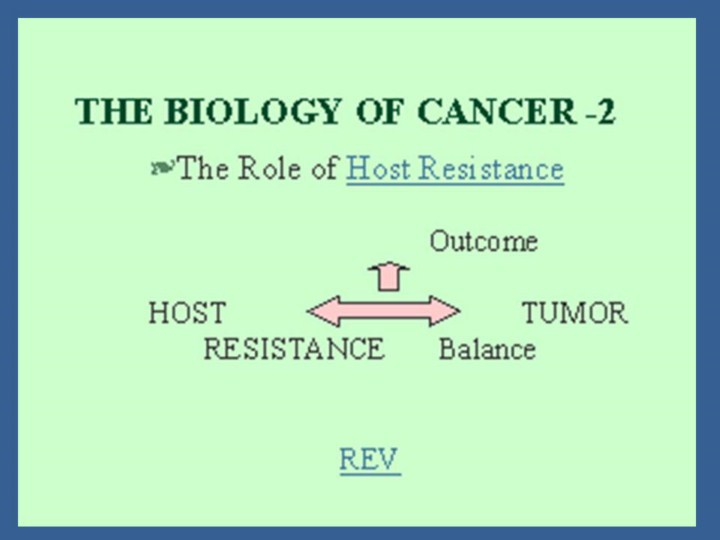Search inside of Supercourse and lectures in HTML and PPT format
 |
 |
front |1 |2 |3 |4 |5 |6 |7 |8 |9 |10 |11 |12 |13 |14 |15 |16 |17 |18 |19 |20 |21 |22 |23 |24 |25 |26 |27 |28 |29 |30 |31 |review |

A tumor
does not grow freely in its human host as it would in tissue culture. The
host puts up a defense, generically called “host resistance”, which
resembles defense against infections. There is a homeostatic interaction
between the host and tumor cells or microorganisms based on a dynamic
balance between them and the host microenvironment in which they grow - an
updated version of the seed-and-soil hypothesis. The tumor arises from an
abnormality of growth and differentiation based on altered structure,
regulation and expression of its genes. The resulting properties of
transformation, invasiveness, metastasis, clonality and heterogeneity give
rise to its malignant behavior. But the outcome of its growth still depends
on its interactions with host defenses for a net result of progression,
dormancy or regression. The process is dynamic and chronic with the balance
of host resistance changing with the advancing stage of tumor growth. |
|